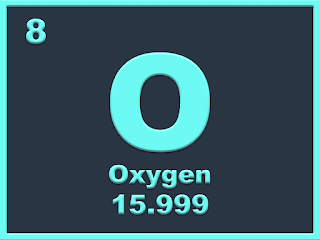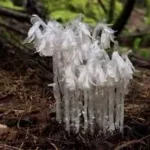
Oxygen is the chemical element with the symbol O and atomic number 8. It is a member of the chalcogen group in the periodic table, a highly reactive nonmetal, and an oxidizing agent that readily forms oxides with most elements as well as with other compounds. This odorless, colorless gas has eight protons in the nucleus, and is pale blue in its liquid and solid states.
Oxygen makes up one-fifth of the Earth’s atmosphere and is the third most abundant element in the universe by mass.
Oxygen is the most abundant element in the Earth’s biosphere in terms of mass.
The high concentration of oxygen in the atmosphere is caused by the Earth’s oxygen cycle, which is primarily driven by plant photosynthesis.
Leonardo da Vinci proposed that air was composed of two gases, one for breathing and the other for fueling fire.
In 1774, Joseph Priestly is widely credited with discovering oxygen.
Although Carl Wilhelm Scheele may have discovered oxygen the previous year, his work was not published until after Priestly’s.
At normal pressure and temperature, oxygen molecules bind to form the gas dioxide, or O2, that is present in the atmosphere.
It belongs to the periodic table’s chalcogen group and can easily form compounds with all elements except helium and neon.
Because of its presence in water, oxygen accounts for the majority of the mass of all living things.
All life relies on it for cellular respiration.
Ozone (O3) is an allotrope of oxygen that forms the upper atmospheric ozone layer and absorbs UV radiation from the sun.
Other methods, such as fractional distillation of liquefied air, can be used to produce commercially usable oxygen.
Fresh water contains approximately 6.04 mL of oxygen per liter under normal conditions, while sea water contains approximately 4.95 mL of oxygen per liter.
Natural oxygen is composed of three stable isotopes: O-16, O-17, and O-18.
With a 99.762 percent occurrence, O-18 is the most abundant isotope of oxygen.
The element oxygen is paramagnetic.
Because oxygen is water soluble at extremely low temperatures, it plays an important role in the high concentration of life in the polar oceanic regions.
Green algae and cyanobacteria are thought to be responsible for producing up to 70% of the free oxygen found in nature.
Prior to the appearance of photosynthetic organisms about 3.5 billion years ago, free oxygen gas was nearly non-existent on Earth.
Commercially produced oxygen is used in a wide range of industries and applications, including medical applications for bottled oxygen.








